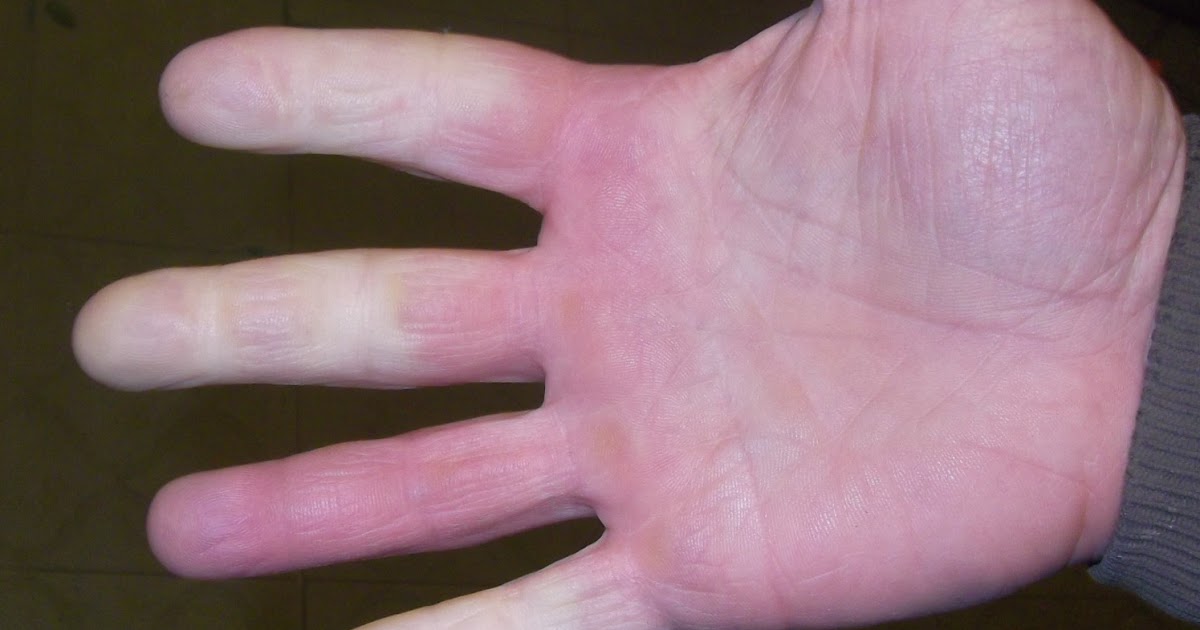Serious Signs Anemic Individuals Often Exhibit
Anemia is a fairly common ailment that comes into play when a deficiency in red blood cells interferes with the delivery of oxygen throughout the entire body. Anemia is most often caused by low iron levels in the blood. Without iron, red blood cells begin to drop in levels of hemoglobin, which carries oxygen from the lungs to the rest of the body. Another cause of anemia is a deficiency in vitamin B12. Other issues that can inhibit the body's production of red blood cells, resulting in anemia, include kidney disease, chronic inflammation, leukemia, and inherited conditions.
Learn about the major indications an individual may be anemic now.
Fatigue

Perhaps the most common sign of anemia is fatigue. Feelings of exhaustion and lethargy, more than feeling energized, regardless of how much sleep or physical activity has been taken in, is a signal for individuals to make an appointment to see a doctor. As part of a complete anemia blood review, one test commonly conducted is called a complete blood count. Even if the results of this test indicate the patient does not have anemia, unexplained fatigue can be a vital symptom to countless other health concerns, including thyroid problems, such as hypothyroidism, or diabetes.
Understand more ways to identify the presence of anemia now.
Dizziness

Many individuals experience waves of feeling a bit dizzy at some point in life. Dizziness is a feeling of lightheadedness, mainly when going from a sitting to standing position, and is often dismissed as nothing more than vertigo. Individuals experiencing constant dizziness must talk with a doctor for a proper diagnosis, particularly if it has been a while since they have had blood work completed. Dizziness is a notable symptom of a number of health problems, including low blood pressure as well as anemia, and it is certainly nothing to take lightly.
Uncover more serious symptoms often associated with anemia in its many forms now.
Pale Skin

Pale skin is often an early external sign of anemia. When there is less blood flowing through the skin’s blood vessels, an individual's skin tone can look slightly drained. Hemoglobin, an important protein in red blood cells, is what gives blood its red color as well as provides the skin with an almost flushed tone. When hemoglobin levels drop, they take the color with them. This is much easier to notice in individuals with lighter complexions. With darker skin tones, hemoglobin levels can be monitored by checking on the inside of the patient's lips or gums. Or, if it is noted the inside of the patient's bottom eyelids is less red than usual, low iron may be the cause.
Learn more about the major warning signs of anemia now.
Cold Hands Or Feet

Individuals who suffer from anemia often have poor circulation, which can lead to incredibly cold-feeling extremities. While occasionally having cold hands or feet is no cause for alarm, persistently cold hands and feet may be an indication of an underlying issue such as nerves or blood circulation.
Iron deficiency anemia frequently goes undiagnosed until the affected individual experiences symptoms of Raynaud’s disease, a condition where some areas of the body feel numb and cool in certain circumstances. If the patient's hands and feet remain cold, particularly if the weather is warm, they should be sure to seek medical attention to have their iron levels measured. If left untreated, this may lead to significant tissue damage in the hands or feet.
Read about a common sensation experienced in anemic individuals now.
Pins And Needles Sensation

Anemic individuals often present with a symptom best described as pins and needles in their extremities. This sensation is caused by some mechanism causing a blockage in the supply of oxygen to the nerve cells in the affected area. Without sufficient oxygen supply, the nerves lose the ability to send and receive signals from the brain. This loss of ability causes the nerves in the limb or limbs to lose sensation and feel like they have fallen asleep.
Individuals who have anemia have a reduced oxygen concentration in their blood because they do not have a sufficient number of red blood cells to successfully carry oxygen from the lungs and deliver it to the tissues around their bodies. The nerve cells in the patient's extremities are affected by this inadequate oxygen supply, and they will not be able to function the way they would in a healthy individual. This feeling typically comes in waves or short episodes where the limb will lose sensation for a short time. As it regains access to oxygen, the nerves will go through a phase of 'waking up.' This phase is when the pins and needles sensation occurs.
Continue reading to reveal more indications of anemia now.
Headaches

When the brain receives less iron than it normally requires, the arteries begin to swell leading to an instant, painful headache. An iron-deficient body begins to prioritize getting oxygen to the brain first and foremost and then proceeds to take care of other tissues in the body.
Though the body cares about getting oxygen to the brain before other areas, it is still receiving far less than it should. When this happens, the arteries in the brain can start to swell, which leads to those inconvenient and uncomfortable headaches. Those who have made note of frequent, recurring headaches should make an appointment with a doctor to discuss diagnosis and treatment options.
Learn more about symptoms of anemia now.
Shortness Of Breath

Individuals who have recently noted they can only take quick, shallow breaths may be struggling to cope with an iron deficiency. When experiencing anemia, the oxygen levels in the body drop so significantly, affected individuals may always feel slightly out of breath. Regardless of how deeply an individual strives to inhale, if their oxygen levels are lower than normal, shortness of breath will occur. If they have noticeable shortness of breath doing things normally handled with no issue, be it climbing a flight of stairs or playing with their kids, iron deficiency anemia could be the underlying cause.
Get more details about the major warning signs of anemia in patients now.
Chest Pain

Hemoglobin transfers oxygen to every organ in the body. When this transfer of oxygen is reduced, one of the most common reasons is anemia. Due to reduced red blood cells, the heart of an individual with anemia is forced to work even harder to perform simple, everyday tasks. If ordinary activities end up leaving a person feeling severely winded, with chest pain, it may be a clear indication of iron deficiency anemia. This is particularly the case if other symptoms, such as dizziness, also appear at the same time as chest pain. One symptom, after all, is typically not enough for an accurate diagnosis.
Get more information regarding the array of anemia symptoms now.
Unusually Fast Heartbeat

An unusually fast heartbeat (tachycardia) is a common manifestation in anemic individuals. Anemia occurs when an individual's body does not have enough healthy red blood cells to carry out their function of oxygen delivery. Because anemia causes the blood to have an inadequate oxygen concentration, the tissues around the body do not receive the amount of oxygen they need. In order to carry out their specialized cellular functions that make organs work, the cells require cellular energy or ATP. Adequate amounts of ATP can only be produced when enough oxygen is delivered to the cell.
The brain of an anemia patient can detect there is not enough cellular energy, and sends signals to the heart to compensate for the poor oxygen concentration of the blood. The heart then begins to beat faster and harder in an attempt to pump oxygen-poor blood into the lungs and back out to the tissues around the body quicker and more effectively. Tachycardia caused by anemia is a symptom that does not typically occur intermittently. Therefore, a consistent elevated baseline heart rate at rest can indicate the presence of anemia.
Uncover more details regarding the significant symptoms of anemia now.
Leg Cramps

Patients affected by anemia tend to experience frequent leg cramps. The red blood cells in anemic individuals cannot carry and deliver sufficient quantities of oxygen to cells around the body. Various types of cells with differentiated functions are unable to do their jobs because they do not receive enough oxygen to produce cellular energy for their processes. In order for the muscles to contract and relax properly, several processes have to occur in tandem to produce a muscle movement.
The impulse from the brain that initiates a muscle movement must reach the nerves that connect to the muscle cells. The muscle cells then use cellular energy or ATP to carry out the full contraction and relaxation of the muscle fibers. When there are low levels of ATP in the muscular cells, they may have enough energy to induce a muscle contraction. However, the muscle cells in anemic individuals do not always have enough ATP to induce the opposite mechanism to relax the muscle. The muscle remains in the contracted position for longer than usual, resulting in an extremely uncomfortable or painful sensation in the area of the affected muscle. This malfunction is more likely to occur in the larger muscles around the body that are further away from the heart, which is why the cramps from anemia occur most often in the legs.
Keep reading to learn more about how to identify if one has anemia now.
Insomnia

A commonly unthought-of manifestation of anemia is a disorder called insomnia. Insomnia is a sleep disorder where the affected individual has problems falling and or staying asleep. Although fatigue is the hallmark symptom of anemia, fatigue is not the same feeling as sleepiness. An affected individual can feel fatigued constantly, but they may not actually feel sleepy when it is time to go to sleep. In a sense, an individual who experiences constant fatigue may be too tired to actually fall asleep.
Additionally, many iron deficiency anemia patients suffer from restless leg syndrome. This syndrome is a condition characterized by the constant movement of the legs that occurs most often at night when trying to sleep. These movements occur because the affected individual feels an uncomfortable sensation in their legs that is alleviated by leg movements. Because of these sensations, the patient moves their legs constantly making it challenging to fall asleep. Furthermore, when either restless leg sensations or another form of stimuli wakes an anemic individual from sleep, they are often unable to fall back to sleep.
Discover another indication of anemia now.
Pica

Pica is an eating disorder where the affected individual consumes substances that do not contain any nutritional value and may not be considered food on a regular basis. Pica may be an indication of anemia due to the fact many forms of anemia are the result of a nutritional deficiency. When the body is deficient in a nutrient, the brain often attempts to compensate in an unusual way by making non-food substances desirable to the individual. The body does this intending to ingest something that can replenish the shortage of the said nutrient.
Substances often consumed by individuals who have pica include soap, hair, wool, chalk, paint, metal, charcoal, clay, ice, paper, cloth, string, soil, talcum powder, gum, pebbles, ash, sand, and starch. In order for a diagnosis of pica to be made, the pattern of eating the non-food substance must last for a minimum of one month. Often times, individuals with pica induced by anemia will also present with symptoms like nausea, abdominal pain, bloating, and fatigue. These additional symptoms occur due to the effects of the repeated ingestion of a non-food substance on their digestive organs.
